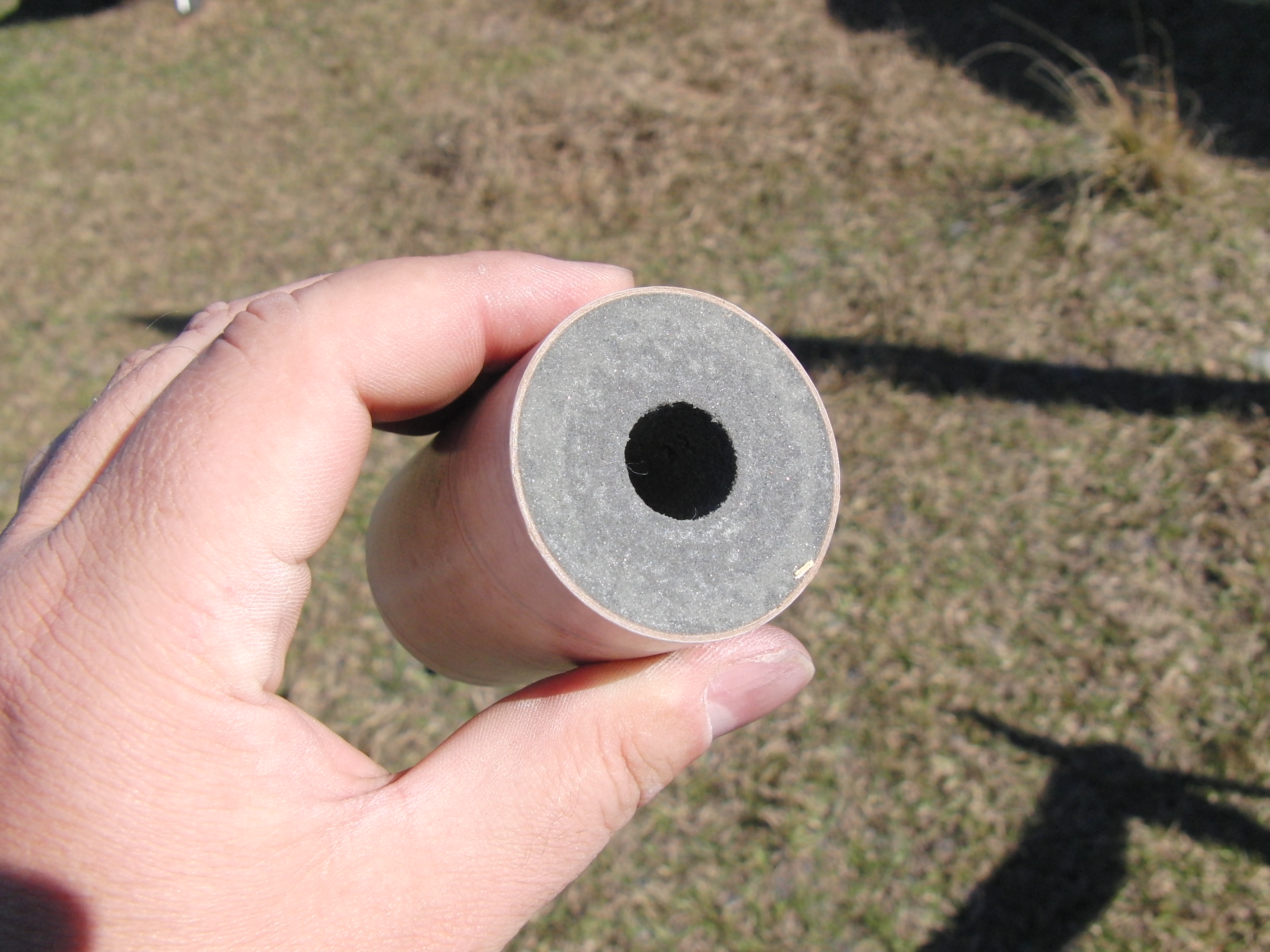Is APCP an Explosive?
What is APCP? Most mid-power and high-power hobbyist rockets use solid rocket motors. These motors usually contain Ammonium Perchlorate Composite Propellant (APCP), the same type of propellant used in the Space Shuttle's Solid Rocket Boosters (SRBs).
The propellant grains used in rocket motors look and feel like hard pencil erasers. This is because APCP is made of rubber.
When discarded tires catch on fire at a dump, they smolder for an extended period of time, producing an excessive amount of smoke. The rubber in the tires doesn't burn very quickly, but it produces a large volume of gas and smoke when it does. This is what makes rubber an excellent fuel for a rocket motor. As the rubber burns in a rocket motor, it creates a large volume of gas which is forced through a small nozzle. Being forced through the small nozzle causes the speed of the gas particles to increase as the particles are ejected from the motor. The acceleration of these particles out the nozzle of the rocket motor causes a force which pushes the rocket in the opposite direction.
Our solid propellant rockets literally "burn rubber." But, it's hard to get rubber to burn. Lighting one tire on fire is almost impossible. Tire fires keep themselves going because of the intense pressure deep under a large pile of tires. The pressure allows heat to build and maintain the fire. In a rocket motor, the propellant burns inside a chamber that holds in the pressure. Without this pressure, the rocket propellant will burn very slowly or not at all. Since there is no source of outside air in the rocket motor, Ammonium Perchlorate (AP) is added to the rubber to make APCP. AP provides the oxygen required to allow the rubber to burn. APCP is currently classified as an explosive by the US Bureau of Alcohol, Tobacco, Firearms and Explosives (BATFE). A court case, initiated by the National Association of Rocketry (NAR) and Tripoli Rocketry Association (TRA) asserts that APCP is not an explosive and that the BATFE improperly added APCP to their "Explosives List." The case, first filed in the year 2000, is still on-going.
So, is APCP really an explosive? There are two definitions of explosive to consider. The first is the legal definition - something that is intended to explode or explodes in its common usage. Rocket propellants need to burn over a period of time producing a large volume of gas to drive the rocket motor. A rocket propellant that exploded would not be very useful. Since APCP is not intended to explode and does not explode when used as a rocket propellant, it is not an explosive by the legal definition. The second definition is a technical one - something that burns at a faster rate than combustion. This basically means that once the explosive is ignited, the burning propogates itself at a rate faster than typical combustion. So, a simple way to determine if APCP is an explosive in the technical sense is to compare how fast it burns to items that obviously are and are not explosives. Testing done by the BATFE itself and submitted to the court shows conclusively that APCP, as used in rocket motors, burns at a rate much slower than low explosives such as black powder. In fact, their testing showed that APCP burns slower than typing paper. Therefore, by the technical definition, APCP is not an explosive.
But, haven't we seen rockets blow up? Yes, rockets have exploded. The most famous example, of course, is the space shuttle Challenger. In that accident, a leak in one of the Solid Rocket Boosters led to a bracket failing allowing the SRB to pivot and crush the top of the shuttle's main fuel tank. This initiated an explosion of the shuttle's liquid propellant. The shuttle's SRBs and the APCP inside them, however, did not explode. They continued to fly away from the explosion until the Range Safety Officer remotely detonated explosive charges attached to the SRBs. Even then the propellant in the SRBs did not explode. In fact, the solid propellant stopped burning at that time because of the loss of pressure. The fact that APCP quickly stops burning when the pressure drops helps make our rocket motors very safe (and precludes APCP from being used to make bombs). Our motors are designed with enclosures on the top and bottom. If there's a problem during ignition - for example, if the nozzle becomes clogged causing the motor to over-pressurize - the enclosures are designed to fail before the main casing of the motor. When the enclosure fails, the pressure in the chamber drops and the APCP immediately stops burning. Any debris from the failure is directed up or down rather than outward towards spectators watching the launch. Conclusion APCP as used in hobbyist rocket motors (and NASA's space shuttle) is not an explosive. References:
[Posted: 2008-07-13 | Updated: 2008-07-13] |




